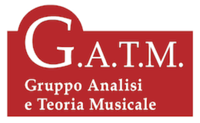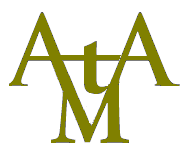Spoken papers
Abrahamyan Knar. From Mere Fool to Enlightened Redeemer: Tonal Tripling in Parsifal
Abromont Claude. Analyser George Benjamin : la question de la polymusique
Acevedo Lucía Camacho. Towards a vocabulary for texture in Berg’s ‘Marsch’ and Lulu
Agaronian Kristina. Meta+hodos Джеймса Тенни: методология анализа музыки от американского эксперименталиста
Agmon Eytan. Beethoven’s Paraphrase/Analysis of Mozart: A Curious Sketch for Leonore No. 2 and its Possible Relationship to the Entführung Overture
Ai Li. Semitone Deviations in a Pentatonic World —— A Study of Pitch Organization in Chou Wen-Chung’s “And the Fallen Petals”
Almada Carlos. Developing Variation in Jobim's Music
Amrakhova Anna. Опыт классификации индивидуальных проектов в современной композиции
Andreeva Elena. «Lux aeterna» Д. Лигети: микрополифония под прицелом семиотики
Antoniadis Pavlos. L'incarnation des algorithmes: Approches et technologies analytiques du point de vue de l'interprète dans l'œuvre pour piano seul Mists d'Iannis Xenakis
Antunes Micael, Rossetti Danilo and Manzolli Jônatas. A computer-aided analysis of the Orchestration in Iannis Xenakis' Aroura
Arfini Maria Teresa. The Rising Canon before Bach’s Musical Offering
Arndt Matthew. “K’ilo is Everything”: On Elaboration in Georgian Chant
Asatryan Mariam. Тембр и пространство звука в музыке Джачинто Шельси
Ayari Mondher. Création / Musique / Culture : Approche psychologique et ethnomusicologique du phénomène de l’écoute
Bachani Vishnu. Recursive and Referential Tonality in Bruckner’s Codas – Two Case Studies
Baranova Tatiana. Додекафония с ближневосточным акцентом: семиотический анализ эскизов «Авраама и Исаака» Стравинского
Baroin Gilles and Khannanov Ildar. The Shadow-Tonnetz: Visualizing Speed and Weight within Harmonic Progressions
Bartoli Jean-Pierre. Topics, figures and musical rhetoric: proposals for an analytical protocol
Batalov Dmitry. (Не)пересекающиеся территории: музыковедческий, исполнительский и слушательский анализ фортепианных сочинений Т.Мюрая.
Bazayev Inessa. The Disfigured Body in Scriabin’s Middle-Period Works
Beaudoin Paul. Rhetoric as a Heuristic in Beethoven's Third 'Cello Sonata
Belcher Owen. A Theoretical Oddity: Ludwig Bussler’s Lexikon der musikalischen Harmonieen (1889)
Belić Senka. Мusic theory and pedagogical practice in Serbia: new perspectives
Beretin Nena. Evaluating the critical reception of Luciano Berio’s Stanza within Patrik Juslin’s code levels
Beriachvili Georges. How Approach Stockhausen and Xenakis with the Theory of Intonation?
Bernstein Zachary. What is a Series? Two Models for the Cognition of Twelve-Tone Music
Besada José L. and Barthel-Calvet Anne-Sylvie. Les « roues dentées » de Xenakis : ancrages matériels pour une conceptualisation spatiale du temps
Bilir Canbekir. Pitch, Schematism, and Isomorphism in Zaide/Adama
Bisesi Erica, Fadda Daniela, Sargenti Simonetta and Baroni Mario. Mussorgsky Pictures at an Exhibition: A computer-driven semiotic interpretation
Bitzan Wendelin. The Sonata: Tradition and / or / vs Adoption? – Beethoven’s Legacy, Sergei Taneyev’s Theory of Sonata Form, and Nikolai Medtner’s Early Sonatas
Bleij Barbara. Lost in Translation: Molldur in Tonal Jazz
Bochmann Christopher. Some rhythmic techniques in Webern’s later works
Bordin Anna Maria. Stravinsky’s Sacre du Printemps: analytical and interpretive proposals for the Réduction for Piano Duet (Abstract for precomposed session)
Boulan Muriel. Stratégies formelles et rhétoriques des finales pour ou avec clavier de Haydn
Bowcock John. Haydn’s Handling of Sonata Form in his Minor Mode Sturm und Drang Symphonies
Božanić Zoran and Medić Milena. On the Circle of Understanding Renaissance Music within Serbian Pedagogical and Scholarly Practice
Bozhikova Milena. Le nom d’Œdipe (1978) – опера Андре Букурещлиева в контексте идей и времени
Brauneiss Leo. Developmental threads in Arvo Pärt's Tintinnabuli-technique
Brown Stephen. Interval Pairing and the Tonnetz in the Music of Lutosławski
Buccio Daniele. Le ricerche teoriche di Ivan Vyšnegradskij intorno al quadrato magico sonoro e le loro applicazioni compositive
Bulycheva Anna. «Преложение пропорций» в концерте Леонтия-монаха «Оком благоутробным» в свете барочной теории такта
Burgstaller Georg. Theory, Analysis, and Beyond: RILM’s Digital Collections and Advanced Tools
Campbell Evan. Mean Counterpoint and Temperamental Choices in the Early Baroque
Caplin William. The “Iconic Cadence”: A Post-Romantic Case of Cadential Nostalgia and Irony
Catalano Matteo. Pratica trasformazionale e spazi d’azione all’interno del Concerto per chitarra di Bettinelli
Chaldaeakes Achilleas. Towards a contemporary technique of the Analysis of the Byzantine Music
Chapkanov Bozhidar. Liszt’s Am Grabe Richard Wagners – A Roman numeral or a neo-Riemannian analysis?
Chekhovich Dmitry. Авторская метрономизация Девятой симфонии Бетховена с позиции сравнительного анализа
Cheong Wai-Ling and Tomoko Yasukawa. Riemann and Hindemith made Indigenous: The “Nationalization” of Harmony in Japan and China
Cheong Wai-Ling. Metric and Rhythmic Novelty in Scriabin’s Piano Sonatas Dynamics between metre and rhythm in Scriabin’s music
Chernova Elena. Early Russian Neumatic Polyphony and/or/vs Western Musical Schemata
Chiu Matthew. Reshaping Rhythm: An Analysis of Prokofiev’s Piano Sonata No. 4
Churchill Jon. Capital Disjunction: Rupture as Expression in Vaughan Williams’s A London Symphony
Clarke Michael, Dufeu Frédéric and Takahashi Keitaro. Towards an Interactive Aural Analysis of Syrinx by Debussy
Clement Brett. Functional Multiplicity of B Sections in AABA Forms
Cominassi Enrico. The Réduction of Le Sacre du Printemps: difficulties, incoherencies, and perfection of the four-hand piano work (Abstract for precomposed session)
Crnjanski Nataša. What can we still learn about music from the semiotic square?
Cubero Diego. The Deformation of the Period in the Early Romanticism
Cugny Laurent. Is Theory of audiotactile musics an analysis method?
Dai Prà Gianluca. Unʼipotesi genealogico-strutturale del dualismo armonico
Dashieva Lidiia. Ладовые архетипы в традиционной музыке западных бурят
De Jong Karst and Noll Thomas. Liquified Tonality in Ravel’s Ondine
de Oliveira Francisco Zmekhol Nascimento and Packer Max. A compositional and tonal-oriented approach to Schoenberg’s Op. 19/6
de Oliveira Pinto Eva-Maria. Zur Gattungsgeschichte der Orgelsymphonie. Ein transkultureller Vergleich zur Entstehung und Definition einer Gattung
Decroix Manon. Repenser l’analyse formelle du poeme symphonique : un dialogue entre theorie et pratique
Demenescu Veronica - Laura, Velter Victor and Ardereanu Ion - Alexandru. The virtual library of musical analysis / musicology
Denisov Andrei. The Forms of Intertextuality in Musical Art: Problems of Classification
Dolgushina Marina. Камерно-вокальная музыка России первой трети XIX века как объект анализа: национальный аспект
Doll Christopher. Five Taken: The Rhythmic Influence of the Dave Brubeck Quartet on British-American Pop-Rock
Donohue Maria. The Improvisers Cookbook: Archiving and Analysing the Assemblage of Free Improvisation
Dordzhieva Ghilyana. Звуковысотная организация калмыцких и монгольских протяжных песен.
Downes Stephen. Scriabin’s miniaturism
Dushaliev Kamchibek. К вопросу изучения инвариантно-вариантной структуры кыргызского традиционного мелоса
Dvoskina Elena. Между «Берлином» и «Лейпцигом». Чайковский-методист сегодня.
Elphick Daniel. Shostakovich Analysis: East meets West
Emmery Laura. The Pioneers of Avant-Garde and the Electronic Music in Yugoslavia: A Case Study of Vladan Radovanović
Esipova Margarita. Закон динамической прогрессии (дзё-ха-кю) и «пауза» (ма) в традиционном музыкальном театре, музыке и других временных искусствах Японии. Проблема аналитического подхода
Everett Walter. Sex and Gender in Recent Popular Music by Women and Non-Binary Performers
Fakhradova Rena. О новом подходе к анализу сочинений Тристана Мюрая
Fankhauser Gabriel and Fankhauser Gabriel. Flat Primary Triads, Harmonic Refraction, and the Harmonic Idiom of Shostakovich and Prokofiev
Fink Lea. Music Theory and Psychology: A Conceptual History of Understanding Musical Form
Franchi Giacomo. Relationship between Muzio Clementi's minor mode piano sonatas and the use of the minor mode in the Classical Form.
Gain Rachel. The Recapitulation as Site of Formal Tension in Hindemith’s Wind Sonatas
Galieva-Szokolay Julia. Deformation, proliferation, «becoming» и совмещение функций формы: перспективы интеграции аналитических подходов
Gallotti Catello. Redefining Schenker’s Principle of Unterbrechung.
Gantchoula Philippe. What exactly is a tonal function ? The example of the dominant
Gatz Almut. Sharpness and Blurriness in Webern’s Counterpoint
Gaulhiac Manuel. Les descripteurs harmoniques : approche acoustique dans l'analyse musicale
Gerasimova Irina. Baroque choral concerts by N. Dylecki: musical and rhetorical analysis
Geslin Potapova Vera . Интермедиальность и процесс написания музыкального произведения в начале XXI века.
Gonin Philippe. Analyser les musiques actuelles : Visualiser l’espace en mouvement en créant des outils pédagogiques s.
Gordon Alexander. «Тембровая драматургия в “Парсифале” Р. Вагнера: конструктивный и семантический аспекты»
Grande Antonio. Counterpoint of paradigms. Ideas for a complex approach to analysis
Greenberg Yoel. Refreshing Formenlehere: Towards a Diachronic, Bottom-Up Approach to Form
Grilli Mariachiara. Applied spectromorphology: dichotomy and verticality in Denis Smalley’s Piano Nets
Guez Jonathan. The Third Dimension of Adorno’s Landscape Metaphor
Guido Francesco. Critical revision of the four-hand Réduction of Le Sacre du Printemps for two pianos (Abstract for precomposed session)
Guigue Didier and Santana Charles. A model for the analysis of orchestration and its experimental application to Núria G. Comas' Recovery Zones
Guigue Didier. Rameau's orchestration: the manifestation of a thought of music as sound.
Gumboski Leandro and Moreira Adriana. Micro-Metrical Dissonance: Analytical and Theoretical Possibilities
Guseinova Zivar. Структурно-аналитические воззрения мастеров церковно-певческого искусства
Haas David. The Three Symbiotic Systems of Leitmotivic Technique: An Integrated Perspective on Concept and Usage
Heidlberger Frank. Beethoven and Reicha – Stylistic Intersections and Misreadings Reconsidered
Heimonen Panu. Re-evaluating the concept of double-Anlage: Mozart's concerto form as an evolving dialogue
Heinzelmann Sigrun. Topoi and Transformation in the Music of Maurice Ravel
Hérold Nathalie. Vers une histoire de l’analyse et de la théorie du timbre et de l’orchestration
Hiroko Nishida. Interdisciplinarity in Hugo Riemann’s Music Theory in the 1910s and the “Harmonic Relatedness”
Hoefs Lars. Models for Villa-Lobos’ Grand Concerto – drawing from cello concertos by Saint-Saëns and Popper
Holt Tim. An Esoteric Reading of the Ars Nova
Hongduo Chen. Complex simplicity:Ligeti’s distinctive contribution to minimalist music
Hooning Martijn. Musical and extra-musical meaning of chord progressions, chord types and key relations in 19th-century compositions
Humal Mart. Arvo Pärt’s Second Symphony and XJI-Invariant Twelve-Tone Rows
Hunter Nicholas. Methodological Approaches to Harmonic Analysis in the Works of Lili Boulanger (1893-1918)
Iglitskii Mikhail. Функциональная система «диатонизированной хроматики» в 24 прелюдиях И. Вышнеградского
Ilic Ivana. From Basic Skills to Scholarly Research: the Case of Music Theory in Serbia
Ilic Ivana. Music(ological) Analysis and Music Theory: A View from Contemporary Music Scholarship in Serbia
Incirlioglu Fusun Koksal. "Zero Gravity": A Specific Textural Type in Contemporary European Art Music
Jaakkola Mirja Inkeri. The Model of Vocal Style as a Tool for Analyzing Contemporary Vocal Music
Jackson Timothy. The “Our God” [“боже наш”] Motive in Rachmaninov's Third Piano Concerto: its Formal and Tonal Implications
Janjuš Olja. (Un)integrierte Musik: Musikkultur-„bending“ bei Komponist*innen Ex-Jugoslawiens
Jaunslaviete Baiba. Manifestations of stylistic dichotomy in 20th century harmony
Jimenez Ivan, Kuusi Tuire and Schulkind Matthew. The effect of melodic cues, transposition, and harmonic distinctiveness on the identification of music from chord progressions
Jimenez Ivan, Kuusi Tuire, Czedik-Eysenberg Isabella and Reuter Christoph. The effect of vertical pitch structures, timbre, and duration on memory for chords
Kallis Vasilis. On Scriabin’s Late-Style: Scale(s), Chord(s), and Tymoczko’s ‘Locally-Diatonic Scales
Karaseva Marina. Освоение ладо-ритмических особенностей внеевропейской музыки: возможности мобильных приложений
Kasimova Anastasia. Эволюция «циклического принципа» в симфониях Венсана д’Энди
Kassian Suzanne. Aspects analytique et méthodologique de la traduction des traités de Rameau en russe.
Khannanov Ildar. Speculative Character of Music Theory that Defies the Goals of Analysis
Khannanov Ildar. The Goal of Harmonic Progression: Tonal and Post-Tonal Perspectives
Kholopova Valentina. Академическое мультимедиа в России первых десятилетий 21 века
Kielian-Gilbert Marianne. Emergent Attractions: Subjectivity and Structure in Performance (Joan Tower, Gabriela Ortiz, Galina Ustvolskaya)
Kim Vita Myriam. Французская opéra-comique как модель для придворных опер Бортнянского "Le Faucon" и "Le Fils rival"
Kirillina Larissa. Beethoven analyzing Beethoven
Kleinlosen Adrian. Wie sich musikalische Gestalten beschreiben lassen
Knowles Kristina. Temporal Duality: Cyclical and Linear Features of Meter
Kolarova Emilia. К проблеме взаимодействия теоретических и исторических источников в ранней болгарской музыкальной лексикографии
Komatović Nikola. Serbian Modernism and Postmodernism: Three Women, Three Generations, Three Contexts
Konings Suzanne, Grijpink Jasper, Militello Santo and Wisse Patricia. Theory in Practice – Analysing Music Theory
Koposova Irina. Техника свободной пульсации лейфа сегерстама: вопросы генезиса
Korobova Alla. Методологические проблемы жанрового анализа музыки / Methodological problems of genre analysis of music
Korolkova Inga. Методы попевочного анализа русского музыкального фольклора
Kóter Peter. Aspects of heterophony in Romanian composers works – theory and analysis
Kotta Kerri and Konsap Saale. Primary dramaturgical design and its impact on the form of sonata exposition of the first movements in the early mature works by Beethoven
Krasnogorova Olga. Метаинтерпретация в новейшей фортепианной музыке: аналитические подходы к исследованию
Kraus Joseph. Noble Horses, Waltzes, and Nocturnal Horns: The Troping of Topics and Musical Expression in Tchaikovsky's Fifth Symphony
Kulpina Alexandra V. Intertextual image of sound in Medieval Latin vocabularies
Kuo-Ying Lee. An Examination of innovations in Alexander Scriabin's Late Etudes for Piano
Kutsenko Ekaterina. Творческий процесс Н.К. Метнера на примере «Девяти песен Гёте» ор. 6 (анализ эскизов)
Lee Giselle. Chromaticism, Circularity and Teleology in Franck’s Piano Quintet
Lee Kelvin H. F. Hexatonic and Breakthrough Function in Fin-de-Siècle Viennese Symphonic First-Movement Form
Legrand Raphaëlle. Old Terms for New Tools: Historicizing French Baroque Music Analysis
Leipson Ludmila. Архитектурное моделирование как альтернативный метод анализа музыки Ксенакиса
Leticia Zomer Ana and Moreira Adriana. Hybridisms Between Indeterminacy and Dodecaphonism in Brazilian Music
Li Lu. Exploring the Validity of Sonoristic Analysis Method by Chen Xiaoyong’s Invisible Scenery
Limongi Ramiro and Eckhardt Federico. Teleology and form comprehensibility in twelve-tone composition: An analysis of Webern’s Op. 28 first movement.
Llorens Ana and Torrente Álvaro. Underneath Opera Seria Conventions: From Musical Contrast to Ternary Forms
Lock Bruno Erich Gerhard, Santana de Paiva Charles and Kotta Kerri. Musical form, tension and texture in Tüür’s “Flamma” for string orchestra: a multiperspective approach
Lock Bruno Erich Gerhard. The role of musical parameters analysing musical tension in Erkki-Sven Tüür's post-tonal orchestral music
Logunova Anastasia. К вопросу о форме pezzo concertato в операх Верди
Logutov Andrey. Speech and Song: A Note on Interdisciplinary Pragmatics of Popular Song Form
Lopatin Mikhail. Bright colors and ‘sharp’ sounds: On musico-visual interactions in trecento song
Loya Shay. The problem of form in Liszt’s late works
Lyzhov Grigorii. «Вариации на созвучие» как принцип гармонии ХХ века (по аналитическим очеркам Ю. Н. Холопова)
Maggiolo Tommaso. Genre and Stylistic Fusion: Colombano’s and Berti’s Parody Magnificat.
Mahmudova Gulzar. Каденционная модель как структурный инвариант продуцирования остинатности в азербайджанской музыке
Mailman Joshua. Modeling Grisey’s Vortex Temporum
Makhova Liudmila. Песенная традиция старообрядцев-«поляков»: полесские и пинежские заимствования
Maliniak Omer. From a Solo Passage to a Solo Exposition
Maltseva Anastasia. Как звучат музыкально-риторические фигуры? К вопросу о реконструкции звучащего образа некоторых теоретических текстов эпохи Барокко
Malvano Stefano Andrea. Diabolus in memoria. Tritone and cyclical unity in Debussy’s Sonate pour flûte, alto et harpe
Malvinni David. Thoughts on Ancient Greek Music Theory, Temperament, Counterpoint, and Heidegger
Mamedov Nikita. Scriabin’s Tonal Manipulation and Structural Conformity in Étude Op. 8 No. 6
Marković Jelena Mihajlović. The Review of Harmony as a Scholarly Discipline in Serbian Music-Theoretical Literature
Masnikosa Marija and Prica Ivana Miladinović. Serbian Music Neo-Avantgarde: OPUS 4 Composer Collective and Ensemble for Different New Music
Masson Marie-Noëlle. Analyse formelle et processus rhétoriques : le legs analytique de la sémiologie européenne
Medić Ivana. Vasilije Mokranjac’s Symphonies Between Music Analysis and Historical Musicology
Mengqi Wang. From Poet to Music: An Analysis on the Second Movement of Beckett’s Bones by Pascal Dusapin
Mercurio Antonello. Melodic formulas in renaissance counterpoint: a preliminary study towards modelling a melodic lexicon
Mezzina Marina. As a mirror of misty water: 'diverted' structures in Nineteenth-Century Lied
Mignogna Francesca. Considerazioni sopra l’apertura della notazione musicale nelle fonti di Pierre-Louis Pollio (1724-1796): una ipotesi di analisi generativa.
Moiseev Grigorii. Nikolai Kashkin's legacy of writing about music
Moreira Daniel. “We all go a little mad sometimes”: uncanny mirrors in Psycho’s music
Moshchuk Ivan. Chopin and Derrida: interpretation différances through the lens of the b-flat minor sonata, Op. 35
Motavasseli Majid. Mahlers Neunte als „Sprachrohr“ der Interpreten: Satzmodelle, harmonischer „Plot“ und interpretatorische Umsetzung
Murphy Patrick and Henderson Alissa. Re-Imagining Tristan: A New Pedagogical Approach to the Most Controversial Chord in Western Music
Murtomäki Veijo and Jackson Timothy. Punctuation and expressive analysis of Mozart’s Symphony No. 40, first movement
Nadyrova Damilya S. and Miller Nicola A. Аудиомоторное зеркалирование в музыкальном восприятии: возврат к первичности опыта (феноменологическое исследование)
Nahoko Sekimoto. D'Alembert’s Elémens de musique (1752, 1762): Ramist or Anti-Ramist?
Nasonov Roman. История европейской музыки как нигилизм (в поисках большого нарратива)
Nedlina Valeriya, Kharuto Alexander and Trutneva Natalia. Manifold Prokofiev’s Sixth Sonata: comparative computer analysis of interpretations
Ninov Dimitar. Modulating Transition in Sonata Form as Part of a Syntactically Unsynchronized Modulation
Noll Thomas and Yust Jason. Harmonic qualities as key to Scriabin’s late harmonic practice
Nurieva Irina. Удмуртская традиционная музыка в звучащем пространстве Евразии (опыт междисциплинарного исследования)
Oinas Cecilia. Sonic Bridges between Singer and Pianist in Kaija Saariaho’s “Parfum de l’instant” and “Rauha”
Okuneva Ekaterina. Временнáя структура сериальных сочинений Карела Гуйвартса
Otašević Olga. The role of Soviet music theory in forming the musicology in Serbia
Papadopoulos Gerasimos-Sofoklis. Towards a syntactic model of neo-Byzantine Music
Papaioannou Antonia. The Eight- Mode Cherybic Hymns of “Antonios the priest and oikonomos”: a comparative byzantine - musicological analysis
Pastushkova Anna. Revisiting the musical concordances of aria and concerto by Antonio Vivaldi
Pellegrin Rich. Salience, Common Tones, and Middleground Dissonance in the Fourth Chorus of Brad Mehldau’s Improvisation on “All the Things You Are”
Penev Ivan. Performance-Analysis of the Generic Hybridity in Franz Liszt’s “Après une Lecture du Dante”
Perfeito Paulo. Jazz harmony: polymodal quintessence
Poliakov Egor. How micro is your timing? Zu Verfahren der softwarebasierten Microtiming-Analyse im Kontext der akusmatischen Musik
Pollaci Marco. Playing with the Past: Eighteenth Century Pedagogic Traditions and Nineteenth Century Compositional Praxis in Tchaikovsky’s Music Creations
Polyzoidis Nassos. Westernisation of rebetiko modes: dromoi brightness and darkness
Popova Irina. Этнонотирование в русском фольклоре: знаки и значения
Pozzi Egidio. Friedrich Chopin and Alfonso Rendano’s Tarantellas, between entertainment and ritual evocation
Prorokova Marisya. The canon: the structure of exchange. Between the musical work and the social organism
Pylaev Mikhail. О статусе и функциях анализа музыки
Rapetti Marco. Recreating scriabin’s idiomatic style: the e-flat minor sonata and its reconstructions
Rebora Carla and Bordin Anna Maria. Le Sacre du Printemps from the Sketchbook to the final version: a modern 'matrioska' (abstract for precomposed session)
Rebrina Ana. Motion in Static Music? Karel Goeyvaertsʼ Sonata for Two Pianos
Reef John. Bach's Energetic Shapes
Ribeiro-Pereira Miguel. Fractal Counterpoint and Time Eternal: J. S. Bach’s C-Minor Fugue (WTC I)
Riccardi Marta. Exploring the Blending of Hexatonic and Octatonic in Rimsky-Korsakov's Operatic Output
Rom Uri. Mozart to Be Continued: The Riddle of the Horn Concerto Fragments - towards Completing the Concerto Movement K. 494a
Rovenko Elena. «Циклический принцип» в интерпретации Венсана д’Энди: философско-эстетический и конструктивный аспекты
Ruditsa Roman. The Formal Generalization of Pitch Structure
Ruihan Yang. Musical Idiom and Cultural Expression: Harmony, Timbre and Gesture of Qigang Chen’s Wu Xing
Russo Michele. George Enescu compositore e docente: nuove prospettive di analisi
Ryzhkova Natalia. О проявлениях "циклического принципа" в «Песне о колоколе» В. д’Энди
Sabetrohani Siavash. Music Criticism and Public Sphere in Eighteenth-Century Berlin: The Emergence of the Modern Discipline of Music Analysis
Sakellaris Giannis. The concept of quotation within the framework of postmodernism: Analysis of Alfred Schnittke’s String Quartet nr. 3
Sargenti Simonetta. Interaction of compositional technique and aesthetic perspectives in the performance of Mantra by Karlheinz Stockhausen
Savenkova Aleksandra. Zur Geschichte der „temporalen“ Formenanalyse: Georgi Eduardovič Konjus und sein „Prinzip der Skelettierung musikalischer Körper“
Schaub Stéphan. Iannis Xenakis’ Pithoprakta (1956): an Analysis
Schenkius Patrick. Reconstructing Charlie Parker's Bebop idiom
Schlegel Christian. Musiktheorie in sozialen Medien
Schmalfeldt Janet. Brahms and the Unreliable Narrative
Schuler Nico. Rubato Performed and Perceived: An Analytical Case Study
Serrano Daniel. Satztechniken und -modelle in zweistimmigen Villancicos der Renaissance
Shabshaevich Elena. Принципы оперной драматургии в музыке к анимационному кино («Пушкиниана» А. Хржановского – А. Шнитке)
Shamilli Giula. Musical Language and Language of Music Analysis
Sheludiakova Oksana. Проблемы методологии анализа современной духовной музыки православной традиции
Shevchenko Tatiana. Piano Sonatas of Nikolai Medtner: genre-compositional characteristics and problems of interpretation.
Shutko Daniil. Полюсные ладовые системы.
Sidneva Tatiana. Музыка как опыт границы в контексте классической и неклассической культурных парадигм
Sio Pan Leong. The Shadow Archetype and Schubert’s Dreams: The First Movement of the E-flat Major Trio, D. 929
Skupin Renata. Le haïkuisme musical et son orientalité: à propos de deux cas
Skvortzova Irina. Аналитические штудии стилистики модерна
Sly Gordon. From Redemption to Despondency: Britten’s Song Cycles on the Poetry of Donne, Hardy, and Blake
Smith Kenneth. Scriabin and Sonata Structures: Two-Dimensional Accelerative Forms
Smith Peter. Compositional Range versus Compositional Ideal Type: Some Reflections on Brahms and Dvořák
Snitkova Irina. Фрактальный контрапункт в Quartetti brevi Сальваторе Шаррино
Sobecki Philipp. Analyzing ambiguities in Scriabin's op. 51, No. 2
Soo Kyung Chung. Four-rotation Sonata Form in Chopin's First Ballade, op. 23
Sprick Jan Philipp. Ambivalence as (Psycho-)Analytical Category in 19th Century Music and Music Theory
Sprick Jan Philipp. Intertextuality and (Self)-Parody: Palestrina’s and Giovanelli’s Vestiva I colli
Stachó László. The influence of performers’ real-time analytical knowledge on listeners' appraisal of performances
Stanishevskiy Yaroslav. Психоакустический подход в гармоническом анализе: сегодняшний день и перспективы
Stanović Inja. (Re)constructing Early Recordings: a guide for historically-informed performance
Starikova Irina. About Turkish Maqams in Chant Compositions of Late Byzantine Period
Stassi Marco. Combinatorial Automatism and structure in Alexander’s Scriabin’s Prelude op. 74 n. 3
Stoianova Ivanka. Инвариант нарративa в современной опере на примере истории Джезуальдо у Шнитке и Шаррино : Джезуальдо (1994) и Luci mie traditrici (2017)
Stoianova Ivanka. Направленность интертекста в современной музыке: Laborintus II (1965) Л. Берио и «Ti vedo, ti sento, mi perdo…» (2017) С. Шаррино
Stroud Cara. Structuring Nostalgia in John Corigliano’s Symphony No. 1 (1989)
Strzelecki Marcin. Towards the general, aesthetically informed theory of harmonic progression, based on analysis of large corpus of music and the geometrical approach to harmony
Stuhlmacher Walther. Intrinsic Formal Functionality in Jazz Standards — ‘Conclusional’ and ‘Pre-cadential’ Features in the Last (eight-bar) Section
Štúň Marián. Identification of vertical structures in contemporary music with a method of Eugen Suchoň
Sunbin Kim. Closing Themes in Bruckner’s Sonata Expositions: Form-Functional Considerations
Susidko Irina. Топосы и нарратив в классической инструментальной музыке: «Ideen» и «filo» в клавирной сонате В.А. Моцарта KV311/284с
Suurpää Lauri. An Individual Opposing the Mass: The Capriccio of Haydn’s String Quartet, Op. 20, No. 2
Szwab Natalia. Reconstructing Deconstruction. On Strategies in Paweł Szymański's Music.
Tarallo Antonio and Bordin Anna Maria. Beethoven’s Exercises: Understanding the Piano Technique Features of the 32 Sonatas
Tarasevich Nikolay. Понятие тактуса и мензуры и трактате А. П. Коклико «Compendium musices» (1552)
Tarnopolskiy Vladislav. Черепахе не уйти от Ахиллеса, или Новая типология для «нового музыкального театра»
Tarquinio Daniel. The Asafiev´s and J. Rink’s reflections about musical form and performance: conceiving the performance of Villa-Lobos’ Ciranda for piano – Xô, Xô Passarinho
Taylor Benedict. Formal Jests: Playing with Form in the scherzo of Mendelssohn’s Quartet Op. 44 No. 3
Tchirkov Sergej. К проблеме анализа Post Internet Art на примере творчества Дженнифер Уолш
Teodori Paolo. Counterpoint rules or models? About the compositional procedures used in a collection of Roman motets from 1675.
Teparić Srđan. The narrative archetype of pastoral in the music of Serbian postmodernism: Sonnets by Svetlana Savić and Whilst Thinking About You by Tatjana Milošević
Teparić Srđan. Мusic theory and pedagogical practice in Serbia: new perspectives
Tham Mitra Alice. The Provenance of Prokofiev and His Motoric Style
Therese de Goede. Monteverdi’s Harmonic Language and the Relevance of Early Continuo Treatises for its Understanding.
Tian-Yan Feng. Time in Tchaikovsky’s Music: Third Symphony in D Major, op.29.
Timpas Polykarpos. Understanding the structure of a melismatic byzantine composition: The analysis of Petros Bereketes’ eight mode communion hymn
Titova Elena. Загадка Тристан-аккорда Р. Вагнера: аналитические версии от Э. Курта до Х. У. Трайхеля
Tool Aare. Solar Symbols in the Music of Arnold Schönberg, Artur Kapp, and Dmitry Shostakovich
Tsaregradskaya Tatiana. «Полифония процессов» как средство формообразования в музыке спектралистов
Ulmasov Firuz. Двуплановая оппозиционность как инвариант многомерного структурирования восточной монодии
Uvarov Sergei. Индивидуальные формы мультимедийного синтеза. Новые стратегии взаимодействия визуальных образов и звука
Väisälä Olli. Harmony, Voice Leading, and "Idea" in Schoenberg's Op. 11/1
Van Herck Bert. Luc Brewaeys: Belgian Spectralist
Vartanov Sergei. How a theorist and a performer follow different goals: the problem of holistic interpretation of music
Veksler Yulia. Сочинения Альбана Берга в ракурсе теории «энергетизма» начала ХХ века
Venn Edward. Tonality in the operas of Thomas Adès
Venturino Stephanie. Pivot-Notes in André Jolivet’s Style Incantatoire
Verin-Galitskaya Alena. Единый композиционный принцип в сольных, ансамблевых и хоровых номерах вечерни Монтеверди
Verwaerde Clotilde. Une nouvelle lecture de Goethe : les Lieder de Louis Spohr
Veszprémi Miklós. The Earliest Sketches of Franz Liszt’s Second Piano Concerto (1839) and the Emergence of Two-Dimensional Sonata Form
Vidic Roberta. ‘Musical Inference’ between Epistemology and History of Harmony
Vidic Roberta. Counterpoint ‘Localisation:’ Vestiva i colli in Rom and Munich
Viegas Alexy, Paes de Barros Daniel and Lopes Da Cunha Moreira Adriana. Le Sacre du Printemps as an argument for Messiaen and Boulez
Vouvaris Petros. What the master saw: Nikos Skalkottas's 15 kleine Variationen für Klavier
Vuksanović Ivana. Approaches to Music Form in Serbian Music-Theoretical Literature
Wei Gu. Harmonic Functionality in Steve Reich’s Piano Phase, Tehillim, and Quartet.
Weiss Susan. Didactic Images as Symbols of Philosophical Changes in the History of Music Theory
Werley Matthew. An „absolute coalescence” or analytical cul-de-sac? Reconstructing the choreography of Grete Wiesenthal’s musical-dance collaborations, ca. 1908
White Christopher. Definitions and Applications of Harmonic Function
Wilczek-Krupa Maria. Hermeneutic theory of film music
Xiaonuo Li. The Visualization Analysis on Dialect Elements in Chinese Contemporary Music
Yan Zou. Merging West and East: LUO Zhongrong’s Gu Zheng and Orchestra Music “Hidden fragrance”
Yelemanova Saida. К вопросу об инвариантах национального музыкального стиля в казахской традиционной музыке
Yik Long Lau. Stravinsky’s Mask: Metrical Dissonances in “The Mummers” from Petrushka
Ying Wang. The signification, culture and socialization behind music-comparative analysis based on artificial scales between French and Chinese composers’ works
Yumeng Wu. Black-White-Dreams: Unsuk Chin’s cultural identity and three piano etudes
Yunusova Violetta. Проблемы анализа традиционной и современной музыки Азии (влияние специфики инструмента)
Yuriko Shiraishi. Représentation de l’« ascension » : analyse de la dynamique formelle dans l’œuvre de chambre de Gabriel Fauré
Yvonne Teo. Theoretical Hybridity and Post-Tonal Tension
Zagidullina Zalina. Partimenti and grande coupe binaire in Anton Reicha’s theory (to the problem of sonata form establishment)
Zakharov Yurii. On the Problem of Tonal Centrism in Anton Bruckner's Harmonic Structures (Andante from the Fourth Symphony)
Zatkalik Milos. Obfuscation and clarification in the microtonal key
Zavanelli Federico and Ferraris Giacomo. Between Philology and Musical Analysis: Perfect Parallels and Dissonance Treatment in the Reworkings of Some Early Trecento Madrigals
Zaytseva Elena. Русский этномелос в диалоге музыкальных культур: Россия – Западная Европа
Zenkin Konstantin V. О двух приемах «деконструкции» в философских исследованиях А.Ф. Лосева об искусстве
Zenkin Konstantin V. Музыкальный стиль как система инвариантов
Zeranska-Kominek Slawomira. Der Tod, das ist die kühle Nacht. Brahms' ekphrastic interpretation of Heine's poem
Zgliniecka Paulina. Strategies and solutions in the opera libretto. ahat ilī – Sister of gods by Aleksander Nowak.
Žuvela Sanja Kiš and Martins José Oliveira. The role of scalar assimilation and texture in the perception of bitonality
Zybina Karina. Music Analysis and/as/vs Performance: Broadening Horizons
Zybina Karina. What do we analyse? Re-theorising musical works
Алябьева Анна. Традиционные категории формообразования в музыке Юго-Восточной Азии
Богина Елена. Традиционная инструментальная музыка как объект музыковедческого анализа (на материале полевых исследований МГК 1993-2003 гг.)
Высоцкая Марианна Сергеевна. Музыкальная композиция Марко Строппа: нотация как средство визуализации идеи
Гирфанова Марина. Еще один изоритмический мотет в «Романе о Фовеле» с музыкальными вставками?
Гордон Татьяна. Шесть фуг Никола Порпоры: анализ полифонического стиля
Гурьева Наталия. Аналитические и исторические аспекты спецкурса “История русской музыки XI–XVIII веков” в Московской консерватории
Журова Елена. Интеграция категорий теории музыкального содержания в образовательный процесс
Задерацкий Всеволод. Электроакустическая композиция и универсум музыкальной теории
Иглицкая Анна. Денисов и Холопов анализируют прелюдии Дебюсси
Изотова Евгения. Аллен Форт в поисках универсальной теории
Имамутдинова Зиля. Способы передачи смыслов в мелодизированном чтении Корана
Казтуганова Айнур. Проблемы изучения казахской кюйевой традиции
Катунян Маргарита. Н. Дилецкий – Ж.-Ф. Рамо: компаративный диалог
Кузнецов Игорь Константинович. Принципы анализа современных систем микрохроматики в музыке
Курленя Константин. Инвариант в музыкальном искусстве: эволюция научных представлений
Любимов Данила и Кром Анна. «Шехеразада» Н. А. Римского-Корсакова на балетной сцене: анализ формы и драматургических особенностей либретто
Маклыгин Александр. Композиционные увертюрные авантюры в оперных дебютах отечественных «национальных композиторов»
Москва Юлия. Комплексный подход в изучении григорианского хорала и средневековой литургической монодии
Москвина Юлия. Мадригал Роре «Ancor che col partire» как предмет анализа в XVI веке
Науменко Татьяна. Аналитические приоритеты отечественного музыкознания: до и после 1991 (исторический обзор)
Омарова Аклима. Из практики изучения казахской оперы
Пимурзин Павел. Однотемная сонатная форма в симфониях Феликса Мендельсона
Плотникова Наталья. О каденциях и каденционных планах в четырехголосных хоровых концертах Николая Дилецкого
Пономарева Елена. Музыкально-аналитические традиции кафедры теории музыки и композиции Саратовской консерватории
Саркисян Светлана. Об одном свойстве фактуры в оркестровой музыке XX век
Твердовская Тамара. Жанровые инварианты прелюдии и цикла прелюдий в «Буковинских песнях» Леонида Десятникова
Токун Елена. Формульная композиция в позднем стиле Арво Пярта
Чернова Татьяна. О ценностном аспекте музыкального анализа
Чигарева Евгения. Неопубликованная рукопись А.В. Михайлова «Об обозначениях и наименованиях в нотных записях А.Н. Скрябина» (К проблеме взаимодействия гуманитарных наук)
Чинаев Владимир. Архетипы К.Г.Юнга в контексте исполнительского искусства: к вопросу о методе анализа музыкальной интерпретации.
Чупова Анна. Концепция «формы окна» и ее репрезентация в творчестве С. Шаррино
Чэн Пэн. Развитие китайской традиционной «тональности» в творчестве современных композиторов
Шигаева Евгения. Зарубежные оперы на русский сюжет: исследовательские подходы
Юнусова Гузель. Адаптация авторского текста в татарском музыкальном фольклоре
Яо Дин и Алябьева Анна. Китайская опера провинции Хэнань: проблемы акустического анализа голосов исполнителей












